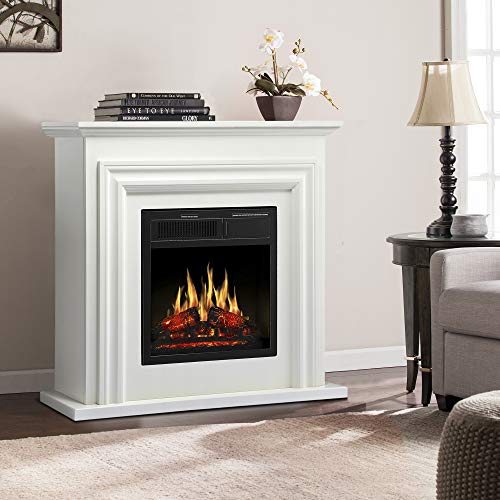Why Fireplaces And Stoves Could Be Your Next Big Obsession
The Comprehensive Guide to Fireplaces and Stoves
Fireplaces and stoves have actually been integral to human civilization for centuries, acting as a source of warmth, light, and convenience. These home appliances are available in different forms and have actually progressed for many years, dealing with varied choices and technological advancements. Contemporary Fireplaces offers a useful overview of fireplaces and stoves, highlighting their types, benefits, upkeep suggestions, and installation considerations.
Kinds of Fireplaces
The world of fireplaces is rich and differed. Here are the most common types:
Wood-Burning Fireplaces:
- Traditional and captivating.
- Needs experienced wood and routine maintenance.
- Produces a pleasant aroma and crackling sound.
Gas Fireplaces:
- Offer convenience and ease of use.
- Available in vented and vent-free alternatives.
- More efficient and cleaner than wood-burning options.
Electric Fireplaces:
- Provide ambiance without the need for a chimney.
- Easy to use with push-button control options.
- Can be used as a supplemental heat source.
Pellet Stoves:
- Use compressed wood pellets as fuel.
- Highly efficient and eco-friendly.
- Typically geared up with thermostats for temperature control.
Ethanol Fireplaces:
- Utilize bioethanol fuel, making them portable.
- Do not need venting, which permits flexible placement.
- Produce a sensible flame with minimal smoke.
Outdoor Fireplaces:
- Designed for outdoor settings; can be wood or gas-burning.
- Great for entertaining and enhancing backyard aesthetics.
- Frequently constructed from stone, brick, or metal.
Benefits of Fireplaces and Stoves
Incorporating a fireplace or stove into a home offers various benefits:
- Aesthetic Appeal: Fireplaces work as striking centerpieces in any space, adding warmth and character to home design.
- Increased Property Value: Homes with practical fireplaces tend to have higher resale values.
- Energy Efficiency: Modern fireplaces and stoves are created to be more energy-efficient, which can cause decreased heating costs.
- Backup Heating Source: In case of power failures, wood-burning and gas fireplaces can act as essential heating sources.
- Versatile Heating Solutions: Different types of fireplaces cater to various heating requirements and lifestyles, from relaxing ambiance to efficient heating.
Kind of Fireplace/Stove
Fuel Source
Efficiency Rating
Maintenance Level
Wood-Burning
Wood
Moderate
High
Gas
Natural gas/LP
High
Low
Electric
Electrical power
High
Very Low
Pellet
Wood pellets
High
Moderate
Ethanol
Bioethanol
Moderate
Low
Outdoor
Wood or gas
Moderate
Varies
Maintenance Tips
Proper upkeep extends the life of fireplaces and stoves, guaranteeing security and efficiency. Here are some necessary ideas:
Regular Cleaning:
- Wood-burning fireplaces ought to be cleaned after a complete season of usage to get rid of soot and creosote.
- Gas fireplaces require routine inspection of the burner and vents.
Routine Inspections:
- Have chimney sweeper carry out yearly assessments to determine blockages or structural damage.
- Examine the seals and gaskets on gas units to prevent leakages.
Fire Safety:
- Install smoke and carbon monoxide gas detectors in homes with fireplaces or stoves.
- Keep a fire extinguisher near the fireplace or range for emergencies.
Use Quality Fuel:
- For wood-burning systems, constantly use skilled wood; avoid treated or painted wood.
- When using pellets, guarantee they are saved correctly to prevent moisture absorption.
Manage Airflow:
- Keep vents and ducts clear to promote effective ventilation and airflow.
- Consider utilizing glass doors or screens to reduce particles and ash in the home.
Setup Considerations
Setting up a fireplace or range needs cautious factor to consider of several aspects:
Location:
- Choose a location that enables correct clearance and ventilation.
- Think about the layout of your home and the benefit of natural heat distribution.
Structure Codes and Permits:
- Check local regulations concerning setups and needed authorizations.
- Engage an expert to ensure compliance with safety requirements.
Fuel Type:
- Evaluate your fuel choices based on accessibility, expense, and environmental impact.
- If choosing gas, make sure existing gas lines can accommodate the brand-new home appliance.
Ventilation:
- Proper venting is vital for security and efficiency, specifically for gas and wood-burning units.
- Seek advice from a professional to determine the very best venting option.
Aesthetic Consideration:
- Select a design that matches your home's interior.
- Think about mantels, surround materials, and colors that match your decor.
FAQs
What is the best type of fireplace for heating?
Gas fireplaces are generally more efficient for heating, while wood-burning fireplaces offer more ambient heat.
How often should I clean my fireplace?
Wood-burning fireplaces must be cleaned up at least once a year, while gas fireplaces require less regular attention depending on usage.
Can I set up a fireplace myself?
While some property owners might attempt DIY installation, it is advised to hire an expert to ensure security and compliance with building codes.
Are electric fireplaces efficient?
Yes, electric fireplaces are very efficient and can serve as effective supplemental heating sources, specifically in smaller spaces.
What is the lifespan of a fireplace?
The life expectancy of a fireplace varies depending upon the product, type, and maintenance; nevertheless, a properly maintained wood-burning fireplace can last over 30 years.
Fireplaces and stoves remain ageless features in homes, using heat and atmosphere. Understanding the different types, advantages, and upkeep requirements can assist house owners make notified choices about setup and care. With mindful planning and routine maintenance, these appliances can improve both the comfort and value of a home for several years to come.
